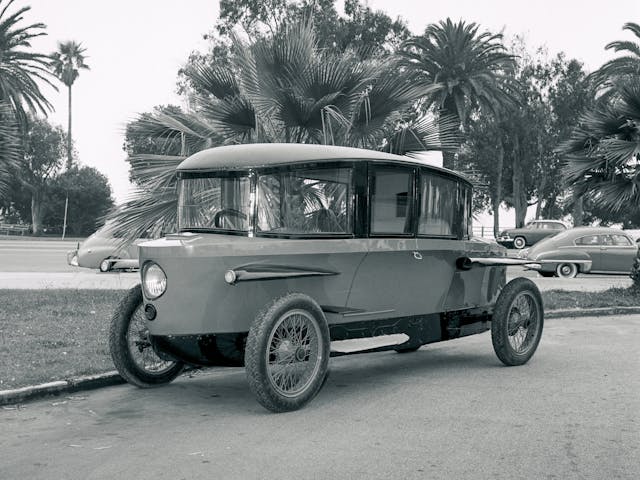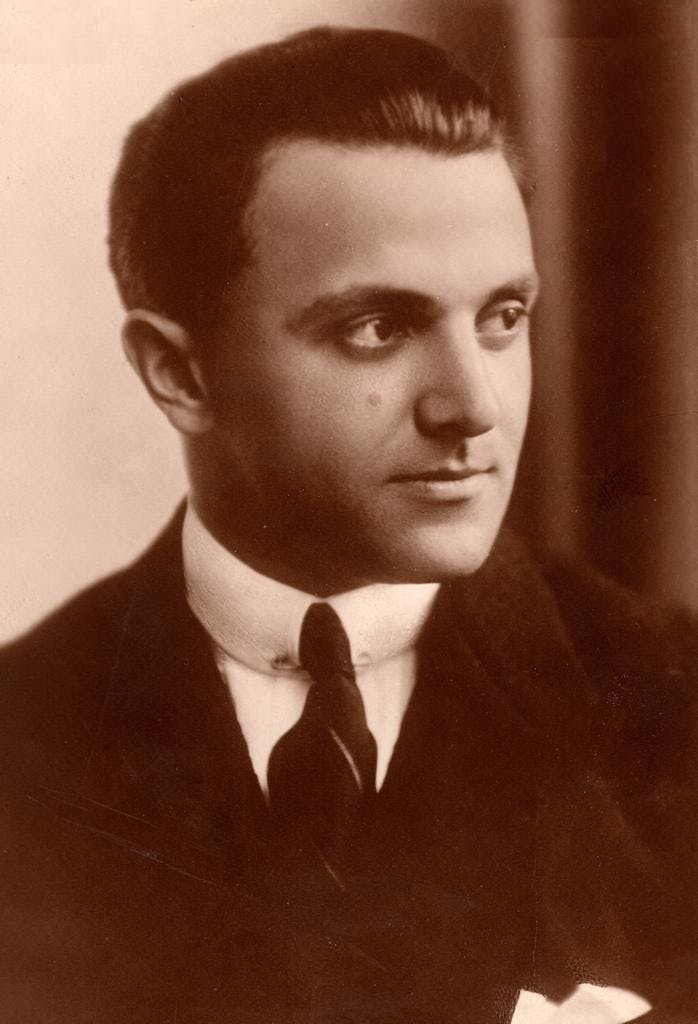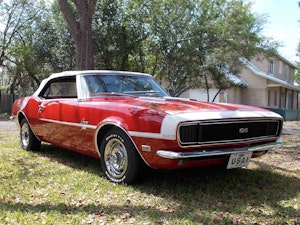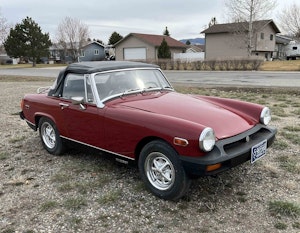Media | Articles
Aurel Persu’s 1922 Streamliner Is Still Slippery by Today’s Standards
As the automobile began to mature in the early part of the twentieth century, mankind looked to the sky and the sea for inspiration. Early cars had been square and slab-sided, their design little more than simply replacing a horse with a combustion engine, but keeping a whiff of wagon around. However, one Romanian engineer living in Berlin thought more boldly, and began designing a vehicle that was so slippery to the wind that its coefficient of drag would best a Toyota Prius today. His name was Aurel Persu, and while he is not widely known outside of Romania today, the teardrop-shaped car he built still exists. It was the first of its kind in the world.

Streamlining in its earliest days was as much an art as it was a science, and you could point to the likes of Labatt’s promotional beer-hauling trucks as an example that it remained that way for decades. Streamlined machinery just looks appealing to the human eye, even when the bodywork is shaped less by a wind tunnel and more by an artistic bent. Think of the Delahayes or Bugattis of the Art Deco period, the way handmade coachwork makes the car look fast just sitting still.
In the same way that early airplanes started basically as big kites and ended up becoming flying artwork like the Supermarine Spitfire, cars progressed pretty rapidly from the 1910s to the 1930s to more organic-looking shapes. However, there had to be a first to do so, and there’s some argument over who gets to claim that title.

One possibility is the Jamais Contente, the first road car to exceed 62 mph. Looking like a torpedo sitting on a transport wagon, the Jamais was actually a battery-electric vehicle, with twin electric motors driving the rear wheels via chain drive. It set its speed record in 1899, part of furious back-and-forth speed record attempts between Jamais designer Camille Jenatzy of Belgium and his rival, a French nobleman named—deep breath—Count Charles-Francois Gaston Louis Prosper de Chasseloup-Laubat. Best to imagine the latter as the great grandfather of Sacha Baron Cohen’s Jean Girard from Talledega Nights.
Jenatzky’s Jamais Content was the first purpose-built speed record car, and its slippery bodywork does show some effort to cut down on wind resistance. However, the driver does stick right out into the slipstream, and the wheels and axles are conventionally laid out—it’s not quite a Bonneville belly tanker.
Marketplace
Buy and sell classics with confidence
The next claimant as streamlining genesis is the goofily-named Rumpler Tropfenwagen. Austrian in origin, this car debuted in 1921 at the Berlin auto show and had genuine aerodynamic bona fides. Edmund Rumpler, its designer, had previously been inspired by the Wright brothers’ successful flight and became Germany’s first aircraft manufacturer in 1910. The Tropfenwagen (the name means teardrop car) had been shaped in a wind tunnel, and when it was later tested in the 1970s, the coefficient of drag was as low as 0.28.

In a time when most cars were driven relatively slowly, low drag wasn’t much of a boon to speed or efficiency. The Tropfenwagen was a bit of a commercial disaster, and its builder went back into the aircraft business after only a hundred were made. The cars did get a brief moment of fame when they were featured in the 1927 Fritz Lang science fiction movie Metropolis.
But while the Tropfenwagen claims the record as the first production streamlined car and managed a remarkably low drag number, its design failed to take into account one critical element: The wheels. As would be common on cars for years, the wheels stick right out into the airflow, presenting a hefty portion of the car’s drag. It’s like having four unpaddled oars in the water, slowing your rowboat.
Just one year after the Tropfenwagen was launched, the aforementioned Aurel Persu submitted patents for his own fully streamlined car. This time, the bodywork would incorporate all elements of the car, including the wheels and headlights. Further, it would be a mid-engine layout with a tapered design and a staggered track that was wider at the front than the rear. A decade before the highly-regarded, much-publicized Tatra T77, Persu would build the world’s first fully streamlined car.

Persu was born in Romania in 1890 to a farming family of means, with some connections to nobility. He was educated early, including instruction in playing the cello from the age of just three. Clearly gifted, he moved to Berlin to study mechanical engineering, working there on the theoretical mechanics of how man-made spacecraft might work. He was quite literally a rocket scientist two decades before Germany’s V2, and he graduated with national honors.

When World War I broke out, Persu returned to Romania to serve with the country’s army. It’s worth noting that Romania fought with the Entente powers against Germany and Austria-Hungary, and in fact, Persu’s brother died fighting with French forces at the Somme. After the war, Aurel went back to his studies in Berlin, this time focusing specifically on the automobile.
It took two years to go from theory to proof of concept. Utilizing a German-made AGA Type A’s running gear and wheels, Persu began the laborious process of building a wooden frame and then stretching a hand-formed aluminum skin over top it. To further reduce drag, he made special covers for the wooden-spoked wheels, perhaps an early progenitor of the famous Mooneyes Moon discs.

Narrower at the rear than at the front, the Persu car resembles nothing so much as Quentin Blake’s drawings of the Vermicious Knids from Charlie and the Great Glass Elevator. Yet if the looks are a bit wonky, the car functioned perfectly, capable of hitting speeds of around 60 mph despite the AGA’s 1.4-liter engine producing all of 20 horsepower. Persu drove it himself from Berlin back to Romania and then proceeded to rack up a total of 75,000 miles on the odometer over the years. He was not a large man, but the cockpit he designed was still a little cramped. Nevertheless, Persu’s car, the first with wheels within its form, worked exactly as intended. Its drag coefficient is claimed to be 0.22, lower than many of even the slipperiest modern cars.
After moving to Bucharest, he began organizing road races and other automotive events, and lecturing on mechanics and aviation. Unfortunately, history got in the way, as Romania’s king moved the country towards an allyship with Nazi Germany. Persu refused to have anything to do with the increasingly authoritarian Romanian government, and the Romanian authorities regarded his connections to noble families with suspicion, so he left teaching. Instead, he once again picked up his cello and joined an orchestra.

When he died in 1977, Persu left his car to a technical museum in Bucharest. There it languished until just a couple of years ago, when a heroically comprehensive restoration returned it to its former glory. Great care was taken to get everything just as it had been in the 1920s, including the original paint code.
Today, Romania is home to several automakers, the most well-known of them being the Renault-owned Dacia. Thanks in part to a recurring bit on Top Gear about the Dacia Sandero, the company’s products are seen as primarily budget offerings, but they appear to be solidly appealing machines for the most part. Yes, even the Sandero.
You have to think Aurel Persu would approve. Though he might note the Sandero’s drag coefficient of around 0.35 and smile knowing that he was able to handily beat that figure more than a century ago.



















“…like having four unpaddled oars in the water, slowing your rowboat.”
What a great description!
I have to admit that, seeing the first photo, I had the car’s front/rear ends wrong.
Anyone else?
Yes I had the ends swapped myself. And your quote of the four unpaddled oars also stuck out to me.
Yeah it took a little bit to realize which was the front and back end of this thing. Having said that once identified it looks like some sort of streamlined Truck in need of a trailer to tow.
As we say up here in Vermont…”so didn’t I”. Simply “local speak” up here. An amazing creation regardless…
I too had it backwards. I think aesthetically we prefer long hoods putting our stylistic impulses in conflict with the science of efficiency.
SameemaS enimraC .
Originally commissioned by the Hubbard family
Me three on the backwards deal, haha. The Jamais Contente looks like it needs an ACME badge, doesn’t it ?
What about Buckminster Fullers famous streamliner